The iconic Blue Mosque is a prominent symbol that stands out on the Istanbul skyline. Fortunately, access to the mosque is quite simple from most areas in Istanbul. We stayed near Taksim Square on the other side of the “Golden Horn”. However, it was an easy walk down the hill to catch the train on the European side of this famous waterway.
Additionally, the mosque is within easy walking distance from other nearby tourist destinations. Theoretically, it is quite possible visit the Blue Mosque, Hippodrome, Hagia Sophia and the Basilica Cistern in the same day.
Blue Mosque Visitation Rules
Non-Muslims are advised to enter the mosque from the western entrance by way of the Hippodrome. Additionally, it is advised to avoid visiting the mosque around prayer times because it is closed to tourists. Mid-morning, is the ideal time to visit.
The dress code requires men and women to wear appropriate leg coverings (No shorts allowed in the mosque). Also, women are required to wear the appropriate head covering before entry. Take off your shoes before you enter and place them in the plastic bags provided. There is no entrance fee charged and leg coverings and head dress are provided free of charge if necessary.
Obelisk of Theodosius I
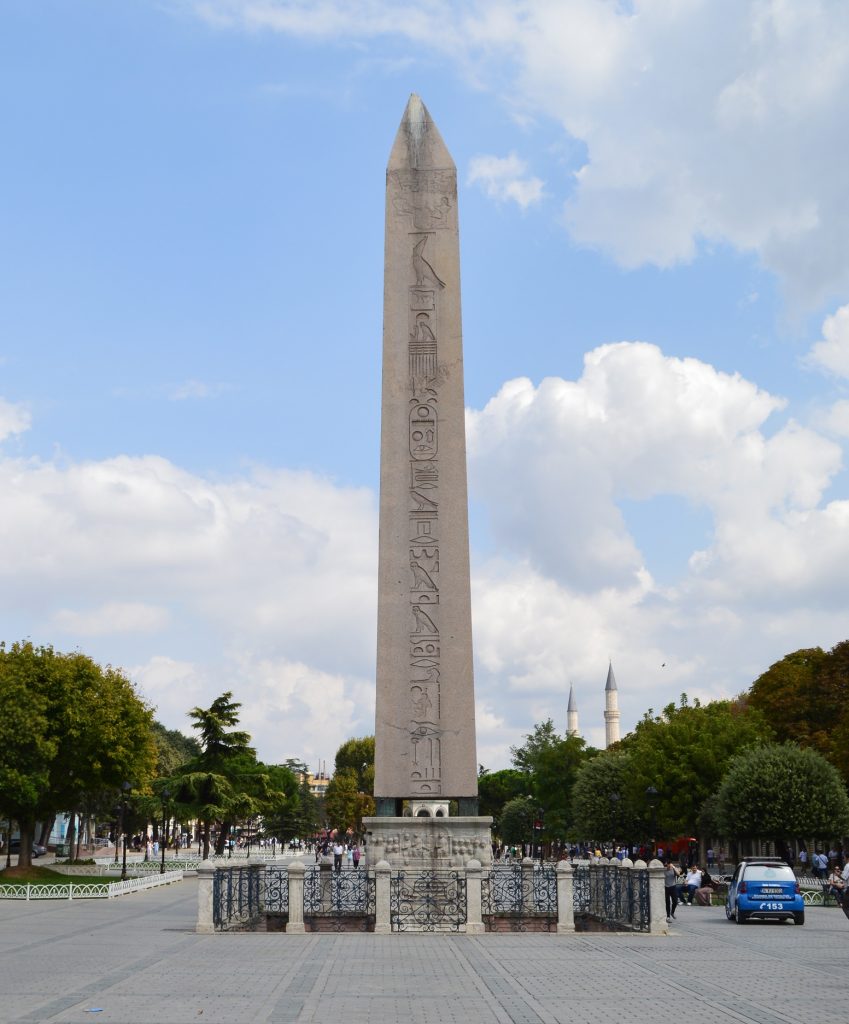
Why is the “Blue Mosque” Blue?
The mosque is also known as the Sultan Ahmed Mosque because it was constructed during the rule of Sultan Ahmed I. Construction of the mosque began in 1609 and was completed in 1616.
The interior of the mosque is blue because the walls are covered with hand painted blue tiles. Additionally, at night the exterior of the mosque is bathed in blue light from the 5 main domes, 6 minarets and 8 secondary domes. Therefore, it is also known as the “Blue Mosque”.
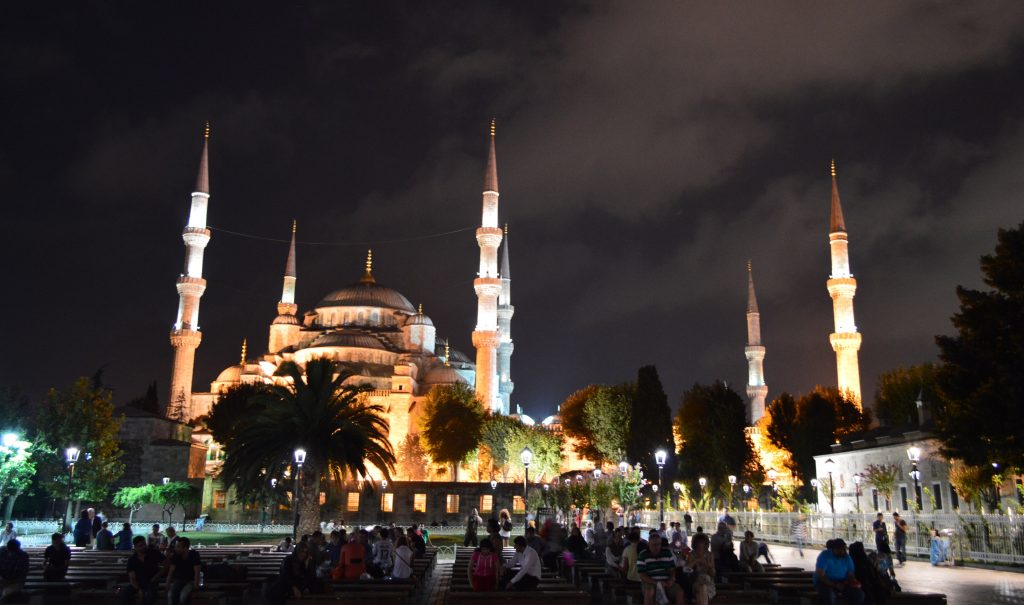
Blue Mosque Controversy
Unfortunately, there is an ignoble aspect that haunts the construction of the mosque. In contrast with the other great mosques constructed during the Ottoman Empire, the Sultan Ahmed Mosque was not funded with the spoils of conquest.
This is because the Ottomans had recently suffered a devastating defeat in their war with Persia just prior to the start of construction. As a result, the Sultan faced criticism from Islamic jurists because he had paid for the construction using the treasury funds.
Architecture of the Blue Mosque
The architecture of the Sultan Ahmed Mosque has a unique feature in its 6 minarets. It is believed that the 6 minarets exist due to a miscommunication between Sultan Ahmed and his chief architect. As a result, the mosque has 6 minarets instead of the traditional 4.
However, at the time of its construction the sacred mosque of the Ka’aba in Mecca, Saudi Arabia was the world’s only mosque with 6 minarets. After facing criticism for disrespect, he ordered that the mosque in Mecca be given a 7th minaret to maintain its unique status.
In modern Turkey, there are currently only 3 mosques besides the Blue Mosque with 6 minarets. The other two being constructed in modern times.
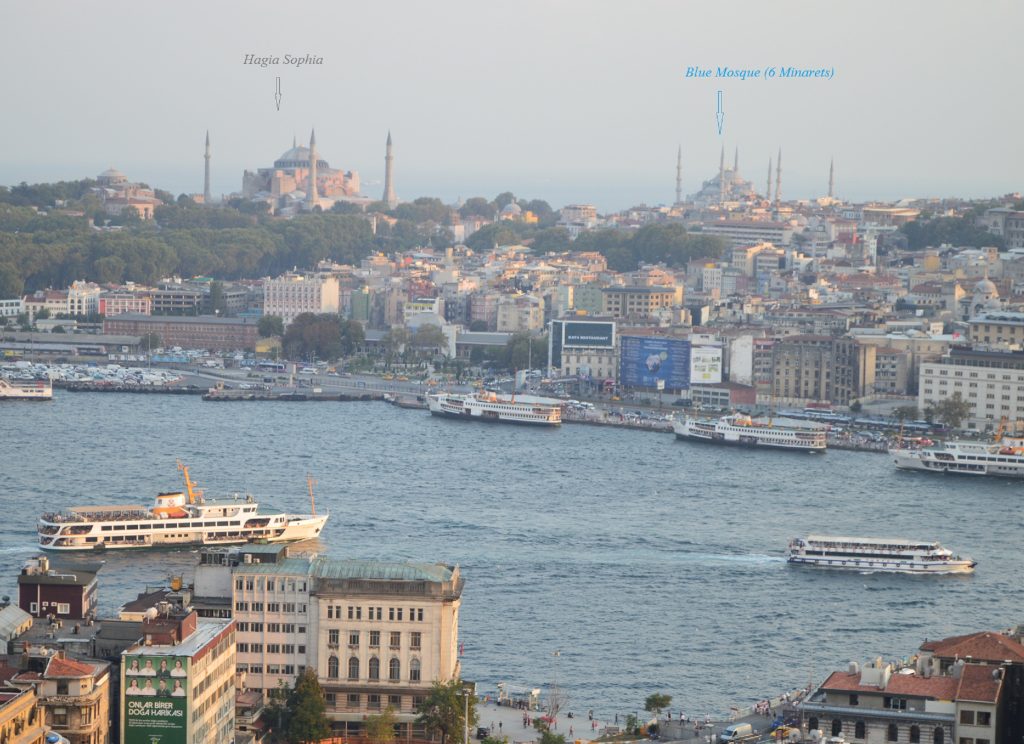
Christian and Islamic Architectural Mix
Additionally, the Blue Mosque is a combination of traditional Islamic and ancient Christian architecture. It contains traditional Islamic features such as the minarets and also Christian Byzantine elements such as the dome. In turn, Christian architects had originally borrowed the dome aspect from the Greeks.
The Hagia Sophia in Istanbul was a Greek Orthodox Church constructed in the 6th century A.C.E. However, after the rise of the Ottoman Empire it was converted to an Islamic Mosque. As a result, it features the original Christian dome and the Islamic minarets. The minarets were implemented at the time it was converted to a mosque. The Hagia Sophia is located a short distance from the famous mosque in Istanbul.
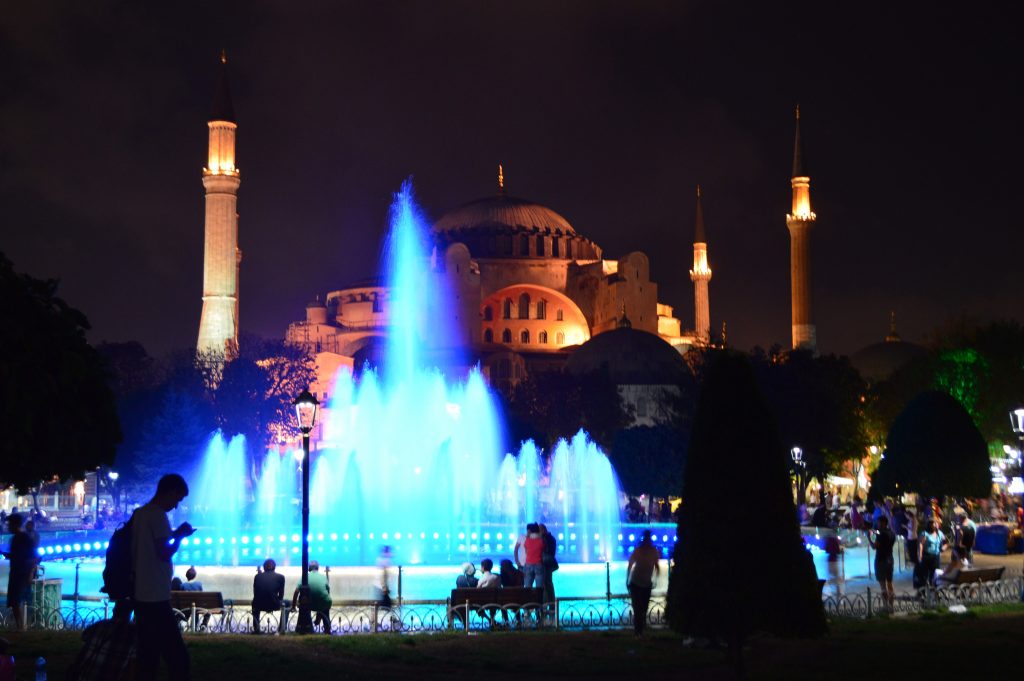
Unique Feature of Blue Mosque
Unique architecture that exists at the Blue Mosque includes a low hanging chain strung across the western entrance of the mosque. This is because Sultan Ahmed was the only person allowed to enter the courtyard of the mosque on horseback. As a result of the chain, he was required to bow his head as he entered the courtyard to pay due respect.
Additional features found at the mosque include the tomb of Sultan Ahmed, a madrasah and a hospice.

Additional Photos:
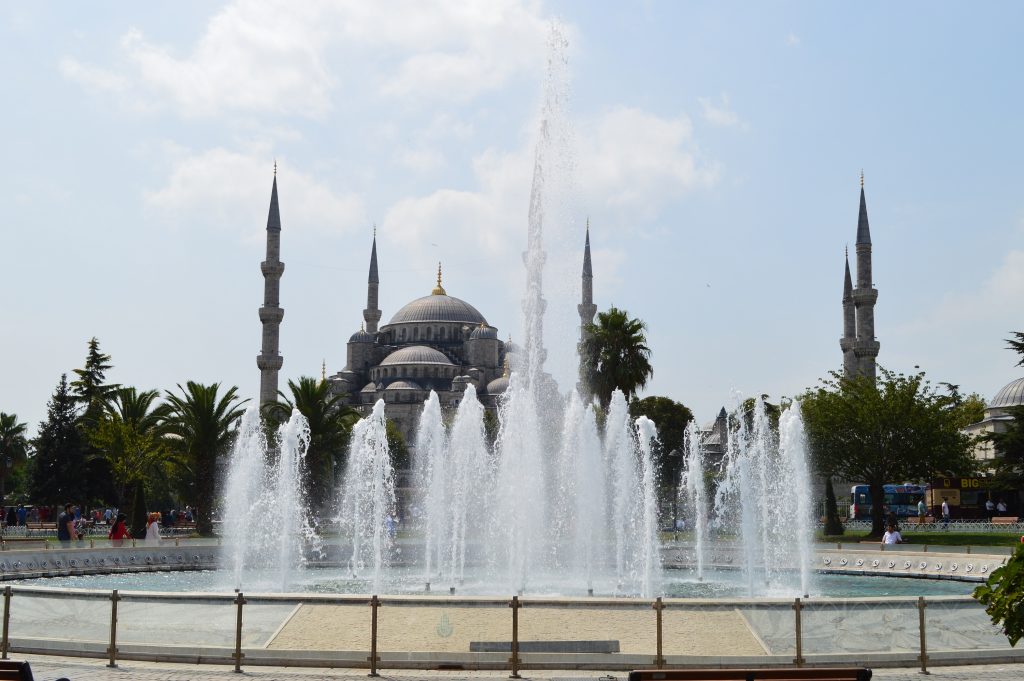
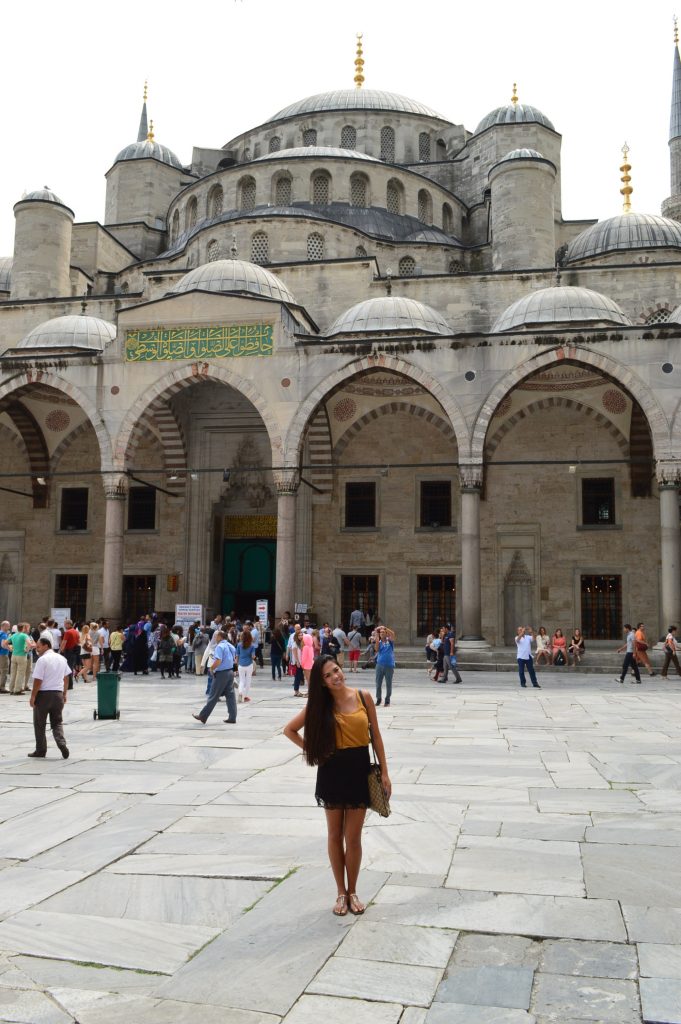

Recommended Travel Posts:
Don’t miss the views from Galata Tower
Ancient Ephesus on the Ionian Coast
See Basilica Cistern in Istanbul

